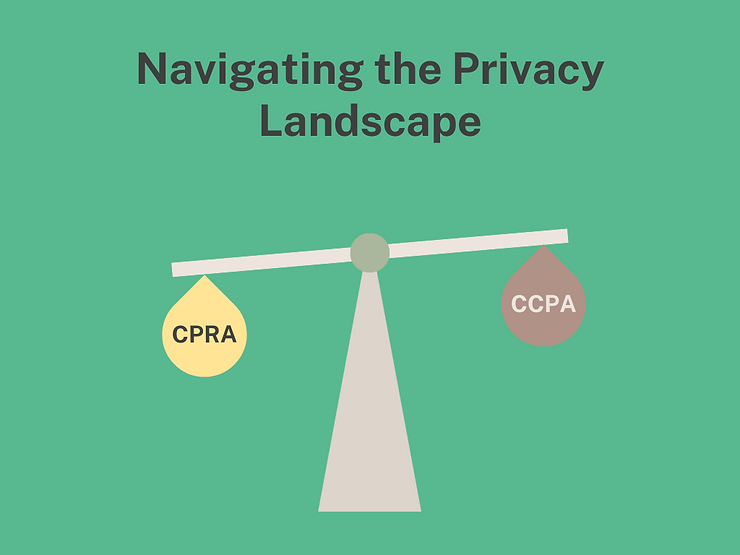Overview of CCPA
In an era where data privacy is paramount, comprehending the intricacies of the California Consumer Privacy Act (CCPA) is crucial for businesses and consumers alike.
This section dives into the CCPA, outlining its fundamental aspects, the rights it grants consumers, and its significant impact on business practices.
What is the CCPA?
The CCPA, a groundbreaking privacy law effective from January 1, 2020, aims to safeguard the personal information of California residents.
The primary goal of the CCPA is to enhance privacy rights and consumer protection, setting a precedent for data privacy across the United States. This section elaborates on the inception, objectives, and the foundational principles of the CCPA.
Key Provisions of the CCPA
The CCPA introduced several vital components shaping the landscape of data privacy:
- Right to Know: Under the CCPA, consumers have the right to access information about the data collected on them.
- Right to Delete: The CCPA empowers California residents to request the deletion of their personal data.
- Opt-Out Rights: The CCPA provides consumers the right to opt-out of the sale of their personal information.
- Mandatory Data Protection: Businesses are required to employ reasonable security measures to safeguard consumer data, as mandated by the CCPA.
- Non-Discrimination Clause: The CCPA ensures that businesses do not discriminate against consumers who exercise their rights under the Act.
The Impact of the CCPA on Businesses and Consumers
Since its implementation, the CCPA has significantly influenced the dynamics between businesses and consumers:
- Enhanced Transparency: The CCPA has led businesses to adopt greater transparency in data handling.
- Shift in Data Management Practices: Compliance with the CCPA necessitates businesses to overhaul their data management strategies.
- Empowerment of Consumers: The CCPA has notably empowered consumers to have more control over their personal information.
- Business Compliance Challenges: Adapting to the CCPA has meant considerable investments in new systems and training for businesses.
- Wider Influence Beyond California: The reach of the CCPA extends beyond California, inspiring similar legislation nationwide and globally.
The CCPA marks a transformative phase in U.S. data privacy laws. Balancing operational data needs of businesses with consumer privacy rights, the CCPA not only reshapes business practices but also empowers consumers.
Understanding and adhering to the CCPA is not just a legal requirement but also a step towards fostering a more transparent and privacy-conscious business environment.
Overview of CPRA
In the evolving landscape of digital privacy, understanding new legislations is key to staying compliant and informed. The California Privacy Rights Act (CPRA) is a significant step forward in this journey. Building upon its predecessor, the California Consumer Privacy Act (CCPA), CPRA aims to enhance and expand privacy rights and protections.
This section introduces CPRA, outlines its major changes to CCPA, and examines its broader implications on privacy regulations.
What is CPRA?
The California Privacy Rights Act, known as CPRA, is a landmark legislation enacted to refine and strengthen the data privacy regulations initially introduced by CCPA. Passed in November 2020 and set to take effect in January 2023, CPRA aims to address the evolving digital landscape and the growing concerns over personal data use and security.
It represents a significant move towards giving California residents more control over their personal information, setting a new benchmark for privacy laws in the United States.
Major Changes in CPRA
CPRA introduces several key amendments and additions to CCPA, which include:
- Enhanced Consumer Rights: CPRA grants consumers additional rights such as the right to correct inaccurate personal information and the right to limit the use and disclosure of sensitive personal information.
- Establishment of a New Enforcement Agency: CPRA creates the California Privacy Protection Agency (CPPA), a dedicated body responsible for implementing and enforcing privacy regulations.
- Increased Obligations for Businesses: The Act extends the obligations of businesses in terms of data processing and introduces new requirements for data minimization, purpose limitation, and consumer opt-out rights for sensitive data.
- Stricter Penalties for Violations: CPRA imposes stricter penalties for violations, especially in cases involving children’s data, reflecting a heightened emphasis on protecting minors in the digital space.
CPRA’s Expanded Scope
b
1. Broader Definition of “Businesses”:
- Commonly Controlled Entities: Companies controlled by or under common control with a for-profit business, share common branding, and share consumer data are now included.
- Joint Ventures and Partnerships: Entities composed of businesses with at least a 40% interest in a covered business are also covered.
- Voluntary Compliance: Entities not otherwise considered businesses can voluntarily comply with the CPRA.
2. Inclusion of Sharing Personal Information:
The CPRA’s scope now extends to sharing personal information, whether for monetary gain or not. This means businesses that exchange personal data, even without selling it, must comply.
3. Coverage of Employee Data:
The CPRA eliminated the CCPA’s exemption for employee personal information, giving employees the same rights as consumers.
4. Expanded Types of Information:
Sensitive Personal Information (SPI): A new category of sensitive data is introduced, including:
- Social security numbers
- Driver’s license numbers
- Biometric information
- Exact geolocation
- Racial and ethnic origin
- Sexual orientation
- Genetic data
- And more
5. Increased Thresholds for Applicability:
The CPRA raised the threshold for businesses to be covered based on revenue or data handling:
- Annual gross revenue of $25 million (up from $25 million)
- Annually buying, receiving, selling, or sharing the personal information of 100,000 or more consumers or households (up from 50,000)
- Deriving 50% or more of annual revenue from selling or sharing consumers’ personal information.
6. Additional Considerations:
- Common Branding: The CPRA defines common branding as the use of trademarks or service marks in a way that suggests common ownership, potentially expanding its reach.
- Compliance for Joint Ventures: Joint ventures or partnerships composed of businesses with at least a 40% interest in a covered business are also subject to the CPRA.
Key Takeaways:
- The CPRA significantly expands the scope of businesses and data covered by California’s privacy law.
- It’s crucial for businesses to carefully assess their compliance obligations under the CPRA, as it has broader implications than the CCPA.
CPRA marks a new chapter in the saga of data privacy regulation. As businesses and consumers alike navigate these changes, understanding CPRA becomes essential.
It’s not just about compliance; it’s about moving towards a future where data privacy is deeply ingrained in the fabric of our digital lives.
With CPRA, California continues to lead the charge, setting the tone for future privacy legislation both in the U.S. and around the world.
CCPA vs CPRA – The Golden State Raises the Privacy Bar
California has long been a pioneer in data privacy, and the California Consumer Privacy Act (CCPA) set the precedent. But in 2020, the California Privacy Rights Act (CPRA) arrived, raising the bar even higher.
So, what’s changed for consumers and businesses? Buckle up, privacy enthusiasts, as we dive into the key differences between CCPA and CPRA.
| Aspect | CCPA | CPRA |
| Enhanced Consumer Rights | Basic rights including data access, deletion, and opt-out of sale. | Adds rights to correct inaccurate data, limit use of sensitive information, and expanded data portability. |
| Business Compliance | Focus on transparency, opt-out options, and reasonable security measures. | Introduces risk assessments, cybersecurity audits, data minimization, purpose limitation, and expands the scope of covered businesses. |
| Data Protection and Security | Requires reasonable security measures to protect consumer data | Specifies the need for regular risk assessments and audits, expands breach liability, and establishes a dedicated enforcement agency (California Privacy Protection Agency). |
This table provides a clear comparison between CCPA and CPRA, highlighting their respective approaches to consumer rights, business compliance, and data protection.
Understanding these differences is crucial for ensuring compliance and adapting to a privacy-conscious environment, both for businesses and consumers. As the legal landscape evolves, staying informed about these changes is key to navigating the complexities of data privacy regulations.
Preparing for CPRA – Essential Strategies and Best Practices
With the California Privacy Rights Act (CPRA) on the horizon, it’s crucial for businesses to prepare for compliance. This section offers strategic insights for CPRA compliance and shares best practices in data privacy that align with both CCPA and CPRA requirements.
Strategies for Compliance with CPRA
Adapting to CPRA calls for a proactive approach. Here are key strategies businesses should consider:
- Comprehensive Data Audit: Conduct a thorough review of the types of personal information you collect, process, and store. Understand how this data flows through your organization.
- Update Privacy Policies: Revise your privacy policies to reflect CPRA’s expanded consumer rights and your updated practices.
- Enhance Data Security Measures: Strengthen your data security to comply with CPRA’s stringent requirements, focusing on protecting sensitive personal information.
- Employee Training and Awareness: Ensure that your team is aware of CPRA implications. Regular training sessions can help employees understand their role in compliance.
- Develop Robust Consumer Request Response Mechanisms: Set up efficient systems to respond to consumer rights requests under CPRA, including requests for data correction and deletion.
- Vendor Management: Assess your third-party vendors and service providers to ensure they also comply with CPRA.
- Regular Legal Consultation: Stay informed on CPRA updates and interpretations by consulting with legal experts specializing in data privacy laws.
Best Practices for Data Privacy
Aligning with CCPA and CPRA requirements involves adopting best practices in data privacy:
- Prioritize Transparency: Be clear and upfront about how consumer data is collected, used, and shared. Transparency builds trust and helps in compliance.
- Implement Privacy by Design: Integrate privacy into the development and operation of new products, services, and data systems.
- Regular Compliance Audits: Conduct periodic audits to ensure ongoing compliance with CCPA and CPRA, adjusting your practices as needed.
- Data Minimization: Collect only the data that is necessary for your business purposes, reducing the risk and complexity of handling personal information.
- Consumer-Centric Approach: Design your data practices with the consumer’s privacy as a priority. This includes offering easy-to-use tools for consumers to exercise their rights.
- Technology Solutions: Utilize advanced technology solutions to efficiently manage and protect consumer data, ensuring compliance with privacy laws.
Preparing for CPRA is not just about legal compliance; it’s about embedding a culture of privacy within your organization. By embracing these strategies and best practices, businesses can not only comply with CPRA but also enhance their reputation and build stronger relationships with consumers. As privacy laws continue to evolve, staying ahead of the curve is key to thriving in a data-conscious world.





